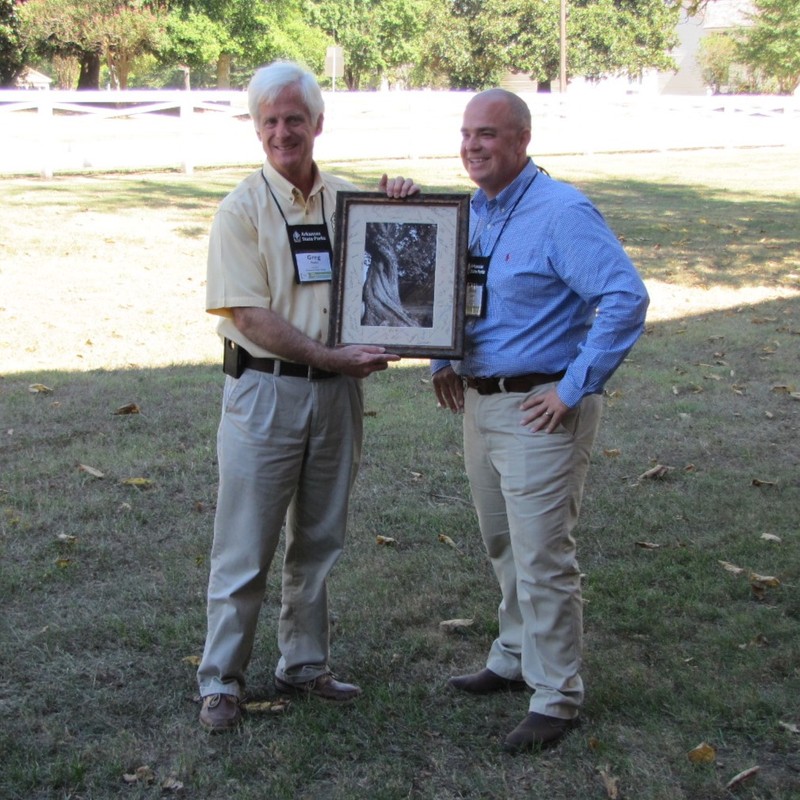Greg Butts Northern Catalpa
Introduction
Text-to-speech Audio
Catalpa trees are well-known not only for their shade, but the long seed pods that drop to the ground. The leaves are home to “catalpa worms,” which are popular as bait for catfish. Catalpa trees typically grow in humid climates and in sandy soils, which is why they’ve taken well to the Hempstead County sandhills. The northern catalpa is native to the Midwestern stretch of the Mississippi River, and grows taller and straighter than the southern catalpa. Popular for their shade, they’ve been known to be planted elsewhere in the United States. Its soft wood is less prone to rot, making it popular for fence posts, furniture, and tonewood for musical instruments. This is a younger catalpa, planted in honor of retiring State Parks director Greg Butts in 2015; the other trees around the 1874 Courthouse are mature catalpas, at least a century old.
Images
Greg Butts Northern Catalpa at the 1874 Courthouse Visitor Information Center
.jpg)
Greg Butts, former director of Arkansas State Parks

A century-old northern catalpa behind the nine-year-old Greg Butts Northern Catalpa

The white catalpa flowers that bloom in the spring

Illustration of Northern Catalpa by Washington artist Ann Bittick

Greg Butts accepting honor of Northern Catalpa from then-Region IV director Shea Lewis

Backstory and Context
Text-to-speech Audio
A native of upstate New York, Greg Butts moved to Arkansas in 1973. Starting during Governor Dale Bumpers' expansion of the state park system, Butts was park planner for six years, then the manager of planning and development for 11 years. In 1990, Butts was appointed Director of Arkansas State Parks by Parks and Tourism Director Richard Davies. Butts was responsible for directing the operation of 52 state parks, central office in Little Rock (including Administrative, Planning and Development, Program Services, Marketing and Revenue), and five regional offices. He oversaw the Outdoor Recreation Grants program, which provides technical assistance and grants to Arkansas communities, along with a $104 million annual budget. In 1996, he successfully helped campaign with Davies for the passage of Amendment 75 to the state constitution, which provided a portion of a 1/8 of a cent of Arkansas Sales Tax to help support Arkansas State Parks. The Arkansas State Parks system experienced the largest development period in its 78-year history under his directorship. He announced his retirement in December 2015; among the honors he received was this northern catalpa planted in the 1874 Courthouse yard in his honor.
Sources
Branches In Time: Notable and Historic Trees of Old Washington Historic State Park. Little Rock, AR. Arkansas State Parks, 2001.
Historic Washington State Park
Historic Washington State Park
Historic Washington State Park
Historic Washington State Park
